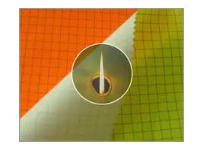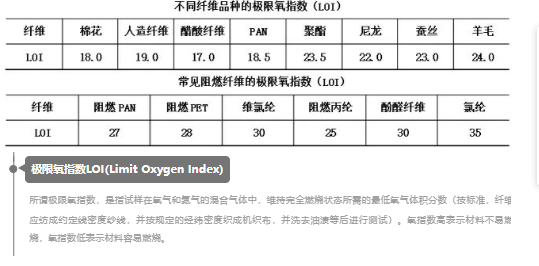How much do you know about flame retardant fiber
Flame retardant fiberHow much do you know
Fire hazards are everywhere. Tens of thousands of fires occur in our country every year, and textile materials are widely used in clothing and family life. In many cases, textiles become fire ignites, releasing toxic gases and directly igniting fires and endangering human health.

In some special occasions, such as the work clothes worn by firefighters, steel workers, welders, chemical plant workers, oil refinery workers, and oil field drilling workers, as well as the combat uniforms of army soldiers, all need flame retardant functions, and they also need to be flame retardant. There are no requirements for melting droplets when burning to avoid secondary burns. In many civil occasions, such as the decoration of hotels, auditoriums, stages, seat covers, curtains, bedding and other decorations of airplanes, trains and automobiles, as well as children’s clothing, they should also have flame retardant properties.

Development history of flame retardant technology
China’s flame retardant technology began in the 1950s to study the temporary properties of cotton fabrics
Flame retardant finishing started, but developed slowly; durable pure cotton flame retardant textiles appeared in the 1960s; flame retardants were developed in the 1970s and research on flame retardant technology for synthetic fibers and blended fabrics began; in the 1980s , Flame-retardant fabrics have entered a new period of development. Many units have developed flame retardants and finishing technologies for cotton, polyester and blended fabrics and flame-retardant synthetic fibers. Generally speaking, flame retardant fiber products are in the rapid development and research stage.
Definition
Flame Retardant Fiber
After contacting the fire source, the fiber cannot burn (such as glass fiber), or the combustion reaction is insufficient, and only a small flame burns (such as chlorofluorocarbon). After the fire source is removed, the flame can extinguish itself quickly after the fire source is removed. Called flame retardant fiber. According to the limiting oxygen index (LOI) value of the fiber, it is generally considered that the oxygen index 27 is a refractory material. The LOIs of common synthetic fibers and flame-retardant fibers are shown in the table below.

Limit Oxygen Index LOI(Limit Oxygen Index)
The so-called limiting oxygen index refers to the minimum oxygen volume fraction required for the sample to maintain complete combustion in a mixed gas of oxygen and nitrogen (according to the standard, the fiber should be spun into yarn with an agreed linear density and woven according to the specified warp and weft density. Make it into woven fabric and wash it to remove oil stains, etc. before testing). A high oxygen index means that the material is not easy to burn, and a low oxygen index means that the material is easy to burn.
Type
Flame Retardant Fiber
There are many types of flame-retardant fibers, and extensive research has proven that fabrics made of flame-retardant fibers have certain advantages. Below we will introduce different types of flame retardant fibers and their applications.
Flame retardant viscose
The methods for flame retardant modification of viscose fiber mainly include grafting method, blending method and copolymerization method, among which blending method is currently a commonly used flame retardant method.
Flame-retardant viscose fiber will not burn when exposed to fire, forming a dense carbonization layer that protects the fiber from oxygen and then rests on its own. Since the cellulose fiber itself does not melt, the flame-retardant viscose fiber also has the effect of no melting droplets.
Flame-retardant viscose fibers can be woven into comfortable clothing fabrics for underwear, pajamas and bedding. It can also be blended with various flame-retardant fibers – acrylic, polyvinyl chloride, flame-retardant polyester, etc. This blend is used for interior decoration and auxiliary materials.
Nomex fiber
DuPont of the United States produced Nomex in the 1960s, with a limiting oxygen index of about 32. It is permanently flame retardant and will not melt under high temperature conditions, and has excellent thermal stability. Nomex also has excellent chemical resistance, good mechanical properties, soft hand feel, good spinnability, and excellent radiation resistance. It has great application in fire-proof work clothes and fire-fighting clothing.
Arylsulfone (PSA)
It belongs to the para-aramid series, with a limiting oxygen index of 33. It is flame retardant and self-extinguishing. It rarely has smoldering or afterburning phenomena. Aramid sulfone fibers can meet the smoldering and afterburning time, damage length and other indicators. Flame retardant requirements for various thermal protective clothing.
Flame retardant polyester fiber
There are three main methods for weaving flame-retardant polyester fibers: copolymerization flame-retardant modification, blending flame-retardant modification and flame-retardant finishing. Fibers do not burn when exposed to fire, but they will still melt and droplets will appear.
FBI Fiber
Polybenzimidazole (PBI) fiber is a non-thermoplastic flame-retardant fiber developed by the American Aerodynamic Materials Laboratory and Celanese Company in 1963. It does not burn in the air, has an oxygen limiting index as high as 40, and can be exposed to a 600°C flame for a long time. Exposed, it only shrinks 10%, and its fabric remains intact and soft. It has good resistance to chemical reagents, hygroscopicity and hand feel, and has good textile processing properties, so it is very useful in firefighting clothing.
Flame retardant acrylic fiber
The modification of acrylic fiber can be obtained through copolymerization flame retardant modification, blending flame retardant modification, thermal oxidation method, flame retardant finishing and post-treatment flame retardant modification, etc. Most of the current industrial products are woven by copolymerization method.
In the past ten years, high-rise residences and hotels have been built in China, and the flame retardant requirements for interior decoration products have become increasingly higher. Some industrially developed countries have long formulated flame retardant regulations for textiles, stipulating that windows in theaters, hospitals, hotels and other public places must be��, curtains, clothing fabrics for the elderly, children, and disabled people must meet certain flame retardant standards. The development and application of flame-retardant fibers and textiles have attracted more and more attention from society.




